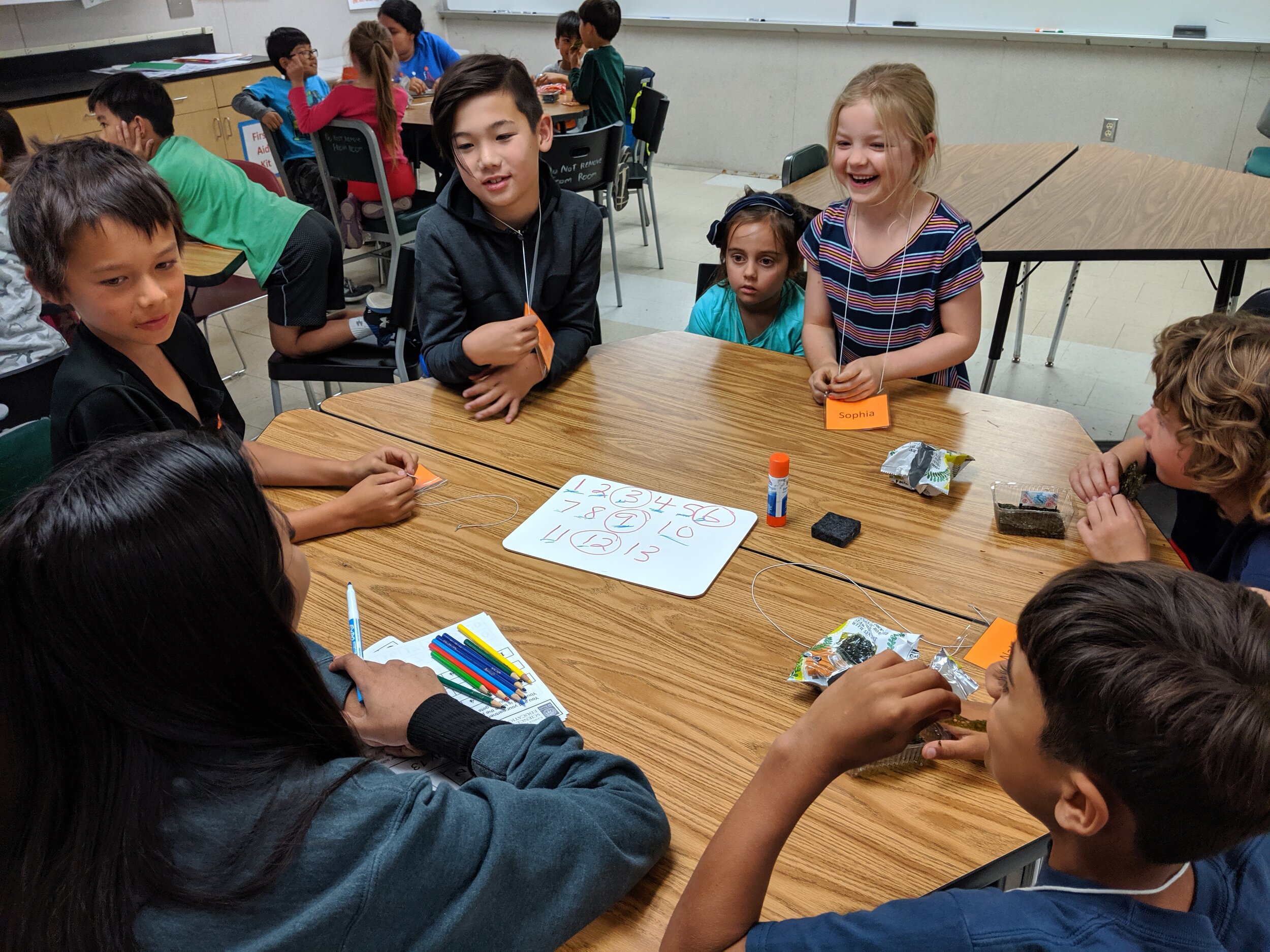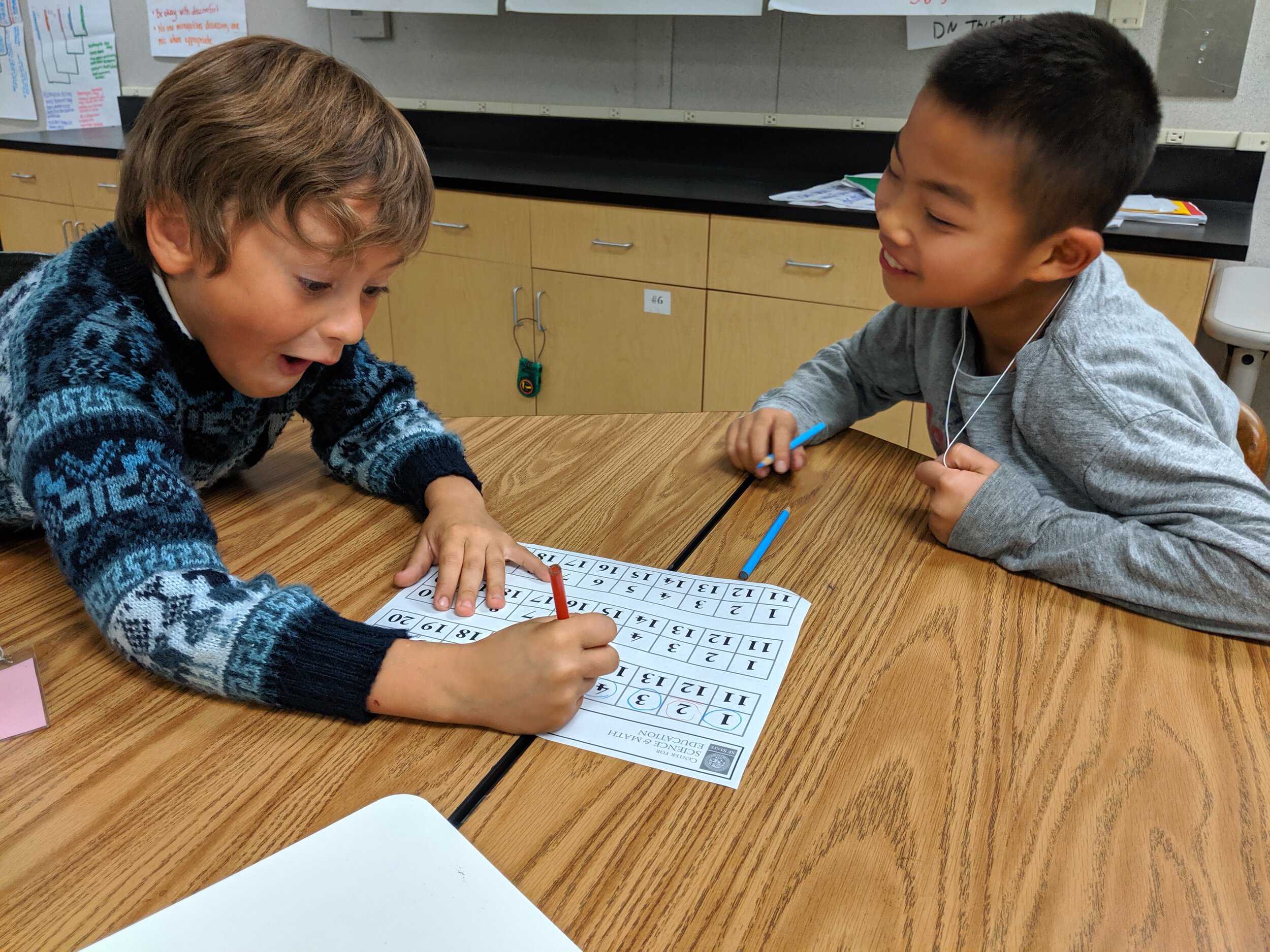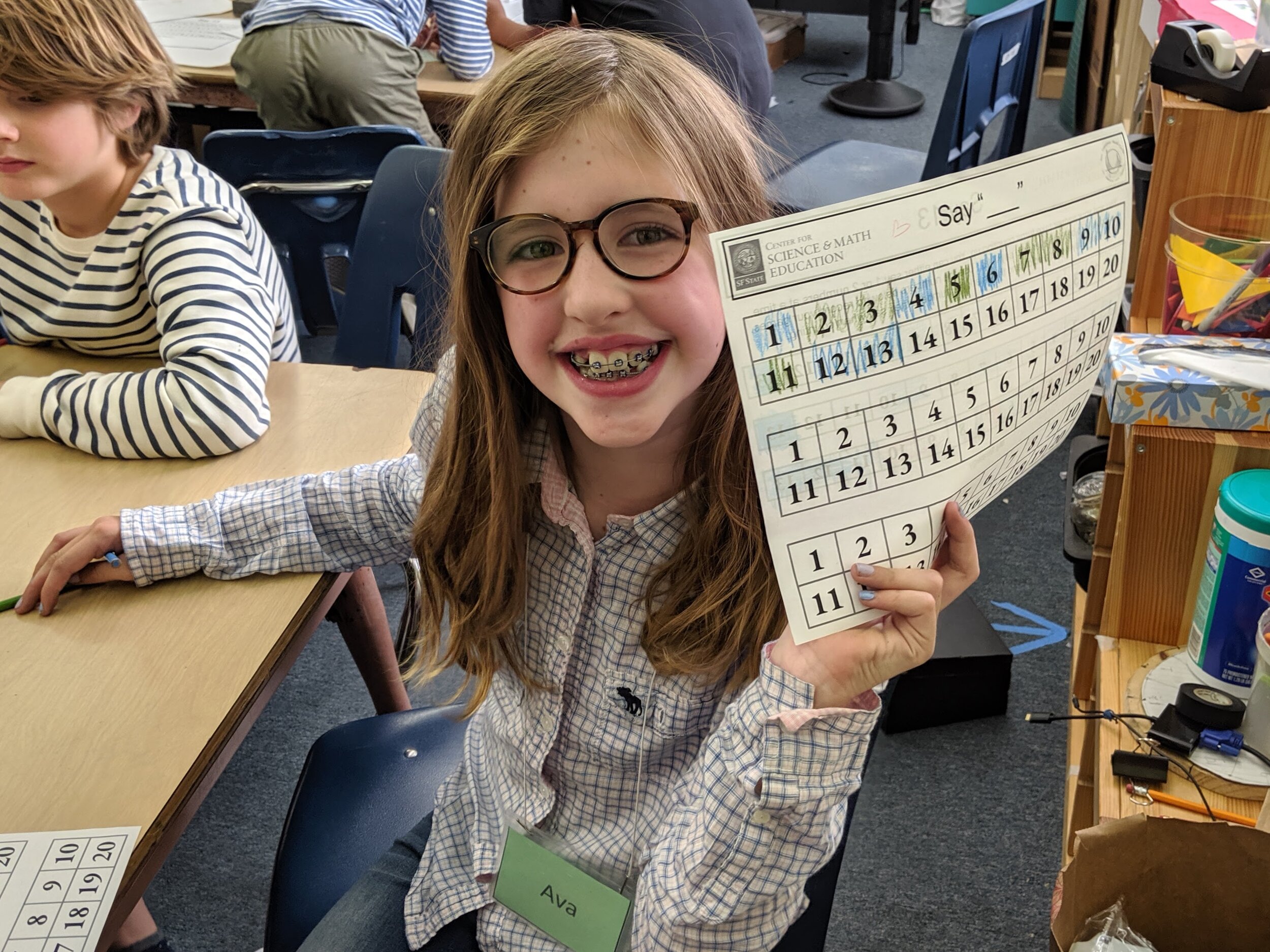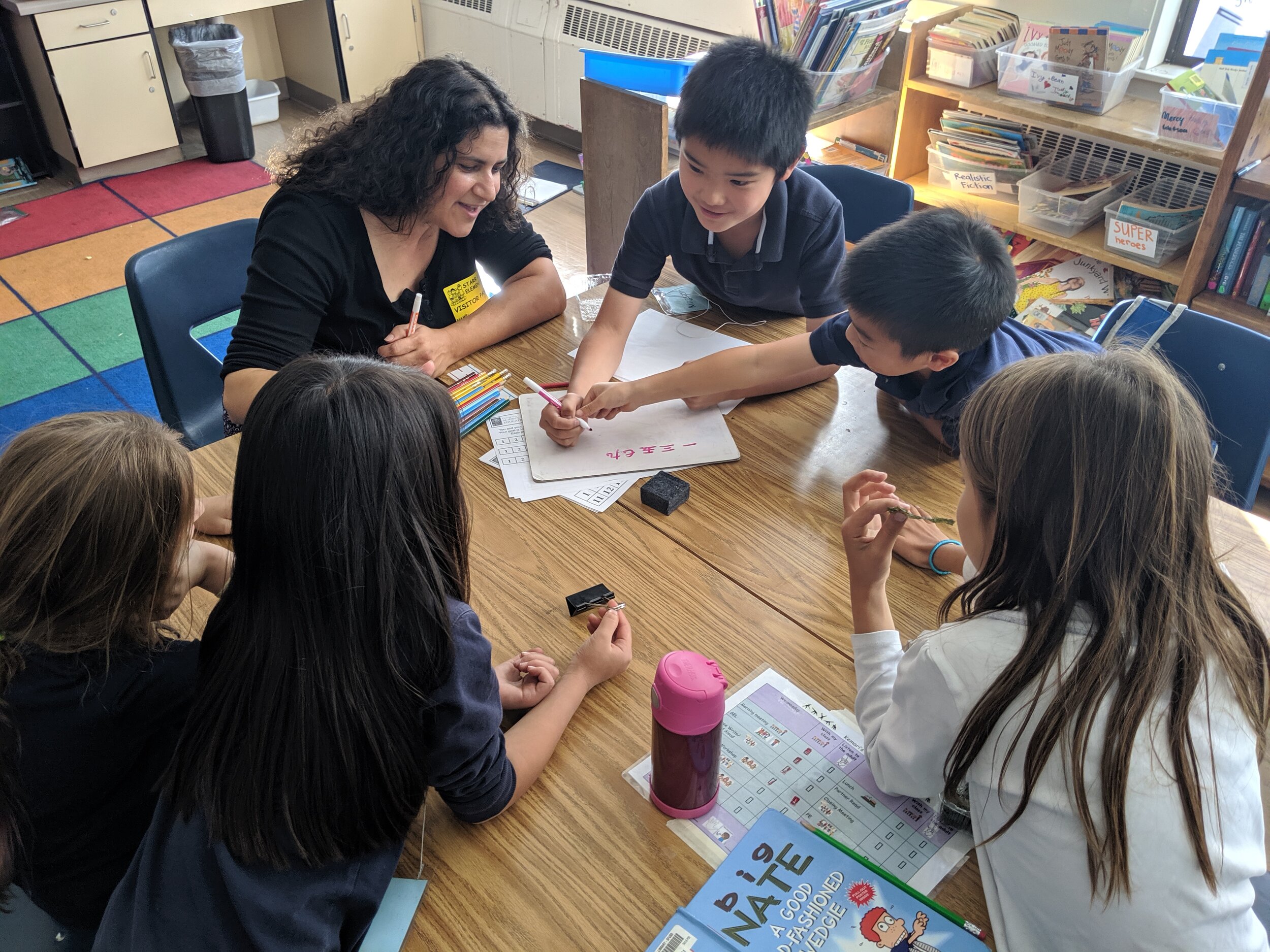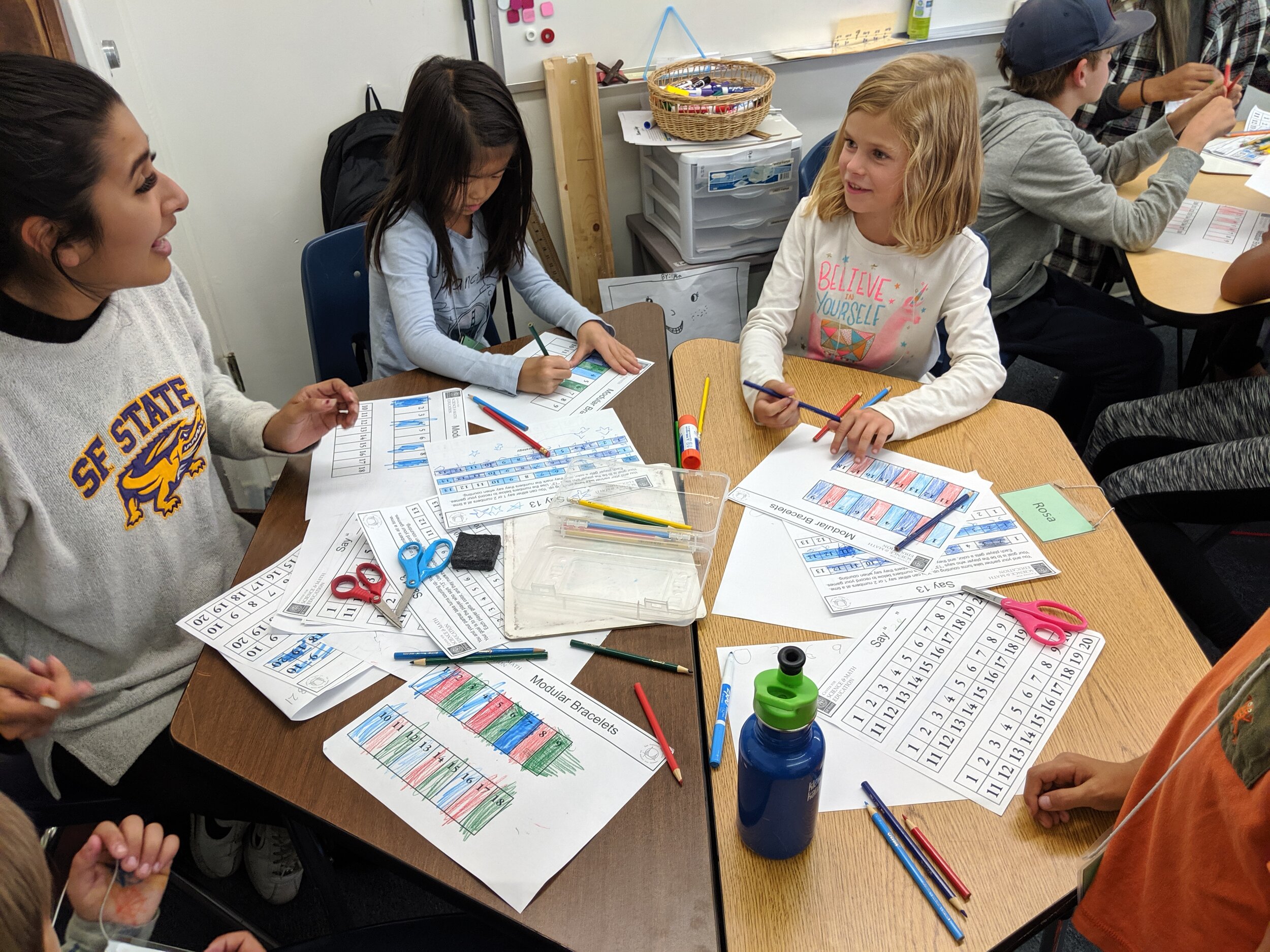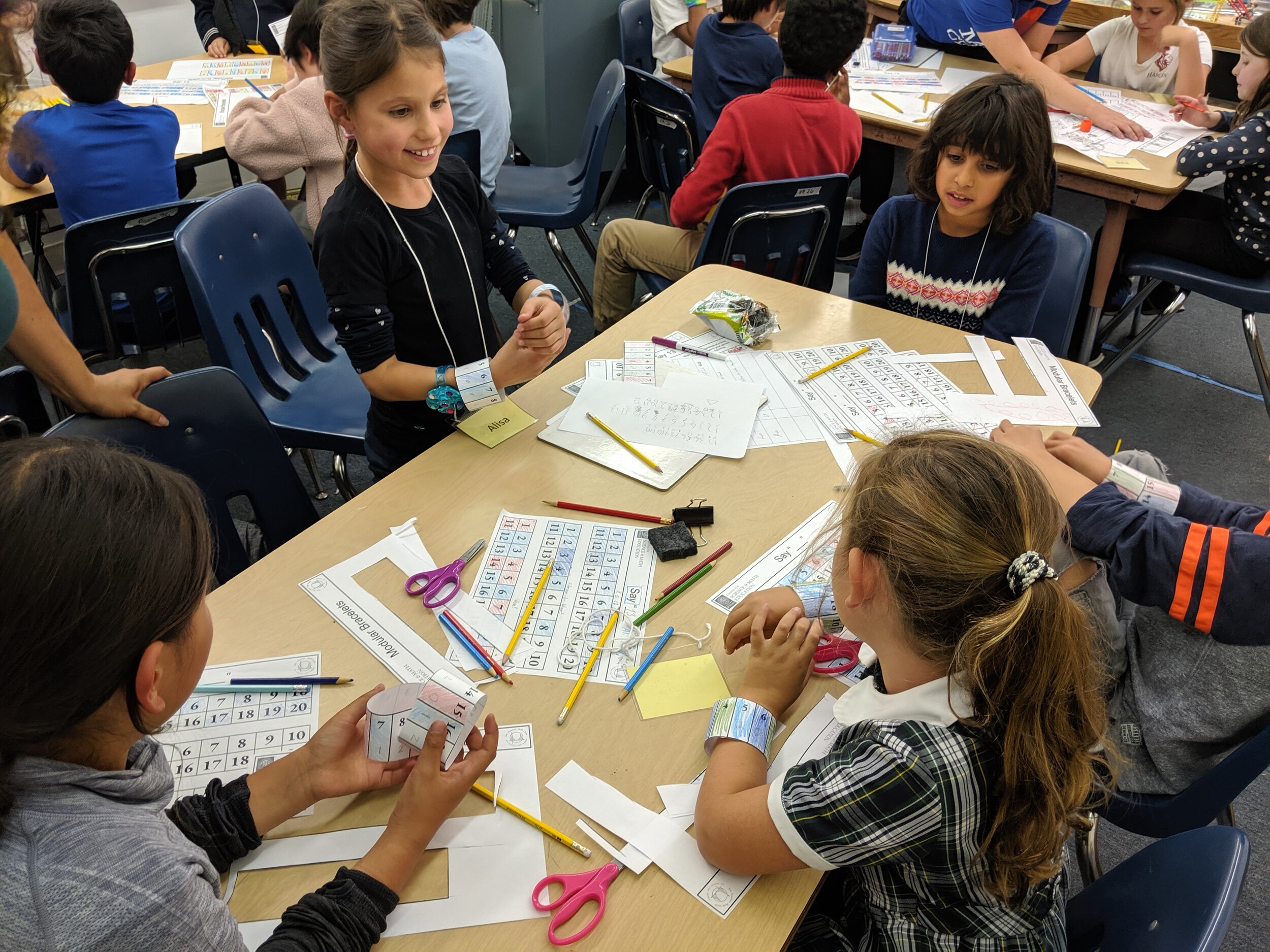Don’t Say 13
How it works
Don’t Say 13 is a 2-player game. Here's how to play:
Players take turns counting numbers starting from “one”.
Each turn, a player can say one number or two consecutive numbers continuing from the last number the other player said.
For example, Player 1 might say, “One, two,” and then Player 2 might say, “Three, four,” and then Player 1 might say, “Five,” and so on.
Whoever says “thirteen” loses the game.
In this activity, students start by playing the game against each other. Their goal is to figure out how to beat an expert (the instructor).
After students come up with a strategy for winning against an expert, they explore what happens if the player who says “thirteen” wins the game instead of losing, and then explore playing the game with targets other than 13.
Why we like this activity
- It’s fun! Students enjoy playing and mastering the games and making the bracelets.
- It helps students develop algorithmic and game-theoretic reasoning.
- It helps students develop intuition about important relationships between numbers.
It requires students to engage in mathematical habits of mind:
- Finding and using strategies to win at the different games no matter what your opponent does.
- Looking for patterns / comparing and contrasting / making and testing predictions / understanding and explaining when exploring the strategies for the different games.
- It has a low floor and a high ceiling: Students can get started playing Don’t Say 13 by trial and error, but they can discover a more effective strategy, and then they can adapt and generalize this strategy to the variations of the game.


